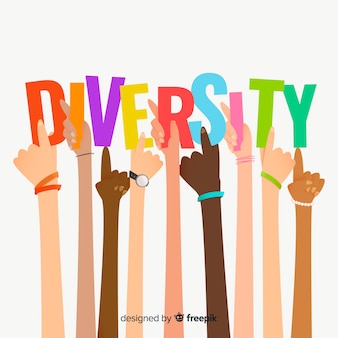Embracing the Rainbow: Fostering Cultural Diversity and Acceptance in Preschool


Preschool classrooms are like a giant bag of crayons – filled with tons of different kids! Each kid brings their own special stuff, like their favorite foods, ways of celebrating holidays, and even how they talk to grown-ups. This is called culture, and it's what makes the world (and your classroom) so awesome!
This guide is here to help you, as a teacher, be a superstar at making sure everyone in your class feels welcome and respected, no matter their background. If you want more instruction on good communication practices, as well as ideas for how to foster a #safe and inclusive learning environment, enroll in our Strength in Differences: Cultural Diversity online training!
Opening Your Mind: Seeing the World in New Ways
The first step is to become super open-minded. This means checking your own ideas about how things should be and being curious about how other people do things. Here's how:
- Think about Yourself: Imagine a magic mirror that shows you how you grew up and how it might influence how you see things. This is called self-reflection.
- Ask Lots of Questions: Instead of assuming you know everything, be curious! Ask kids and families about their #cultures.
- Be Okay with Not Knowing: It's totally cool not to have all the answers. Learning about different cultures is a never-ending adventure!
By being open-minded, you can see the world through the eyes of your #students, no matter where they come from.
A Rainbow of Experiences: Understanding Different Backgrounds
Culture is all the cool stuff that makes someone who they are, from the way they celebrate holidays to the stories their grand #parents tell. Here are some ways culture can be different:
- Families: Not all families look the same! Some have two moms, some have one dad, some have big families with lots of cousins.
- Religions: Some kids might celebrate Christmas, others might go to Ramadan feasts, and some might not celebrate any holidays at all.
- Talking: The way people talk can also be different. Some cultures might be more direct, while others might be more polite and indirect.
Understanding these differences helps you create a classroom where everyone feels like they belong.
When Things Get Fuzzy: Dealing with Differences Smoothly
Sometimes, cultural differences can be confusing. Here's how to handle those moments like a champ:
- Talk it Out: If something seems different, encourage the kids to talk about it! This way everyone can learn from each other.
- Ask for Help: If you're unsure about something, don't be afraid to ask a parent, another teacher, or someone from the community for help.
- Celebrate the Differences: Instead of seeing differences as a problem, use them as a chance to learn and celebrate! Make a big deal out of cool traditions from different cultures.
By staying positive and open, you can turn confusing moments into awesome learning experiences.
Building Bridges: Talking Across Cultures
Communication is key to getting along! Here are some tips to talk to kids and families from different backgrounds:
- Really Listen: Pay close attention to what kids and families are saying, and ask questions to make sure you understand.
- Show and Tell: Use pictures, books, and songs to help everyone understand each other, especially if they speak different #languages.
- Body Language Matters: Remember that not everyone uses the same gestures or facial expressions. Be mindful of how you communicate nonverbally.
These tips will help you bridge any communication gaps and create a classroom where everyone feels comfortable talking.
Making a Rainbow Classroom: Celebrating Diversity
There are tons of ways to make your classroom a celebration of different cultures! Here are a few ideas:
- Awesome Activities: Plan lessons, stories, and games that show cultures from all over the world.
- Holiday Hopping: Celebrate holidays and traditions from different cultures throughout the year.
- Role Model Mania: Put up pictures and stories of famous people from different backgrounds.
- Family Fun: Invite families to share their cultural traditions with the class.
By doing this, you'll help kids learn to appreciate diversity and see themselves and their classmates reflected in the classroom.
This is just the beginning of your journey to becoming a cultural competency champion! By keeping an open mind, learning new things, and celebrating differences, you can create a classroom that's as colorful and welcoming as a giant box of crayons! If you enjoyed this article and want to learn more, sign up for our Strength in Differences: Cultural Diversity online course!
- 18-Hour Train the Trainer
- Cultures in the Classroom
- Training Guide for Families from Diverse Language and Cultural Backgrounds
- Building Bridges for Dual Language Learners
- Engaging Parents in the Montessori Toddler Classroom
- Supporting Little Hearts: Divorce and Separation in the Child Care Setting
- Strength in Differences: Cultural Diversity
- Creating Environments that Nurture Growth and Community
- CDA Bridge Bundle: Preschool without Portfolio Review
- Cultural Sensitivity
- Cultures in the Classroom
- International Day of Sign Language
- Multicultural Games and Activities
- Promoting Diversity, Equity, and Inclusion in Child Care: A Guide to Culturally Responsive Teaching
- Celebrating Eid al-Fitr: Fostering Inclusivity in Childcare Education
- Exploring the World: Fun and Educational Social Studies Activities for Preschoolers
- A 9-Hour Communication Course for Childcare Professionals
- How to Create an Inclusive Childcare Environment: Embracing Diversity and Culture
- Unlocking the Power of DAP
- Sep 1 is National No Rhyme (Nor Reason) Day: Rhyming Fun & Playful Language Activities
- How to Encourage Creativity in Early Childhood Education
- Georgia Childcare Providers: This Certification Could Change Your Career Forever!
- St. Patrick’s Day Activities for Kids: Fun, Educational, and Easy Ideas for Parents & Teachers
- Empowering Every Child: Inclusive Education for Success
- Special Needs Daycare: How to Create an Inclusive Environment
- Creating Inclusive Classrooms Where Every Child Belongs